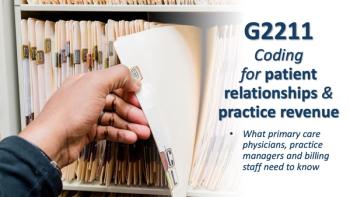
Improve patient collections through billing transparency
Increase patient satisfaction and lift patient collections through transparent patient responsibility
An overwhelming majority (92 percent) of patients want to know their payment responsibility prior to visit. This
Patients have become consumers who seek transparency and flexibility when paying for healthcare expenditures. However, medical groups are lagging when it comes to meeting consumer expectations of identifying, and collecting, out-of-pocket liability.
Technology solutions are beginning to make accurate patient estimates a scalable solution to not only identify but help medical groups engage in best practices for collections.
Patient cost identification should focus on more than running patient eligibility and returning back copays, deductibles and coinsurance levels. An accurate estimate factors in specific procedure codes that apply to a patient encounter as well as processing logic of the specific payer to get to an actual allowable rate - in addition to the standard check for eligibility and benefits.
The number of insured patients using high-deductible health plans (HDHP) has exploded over the last decade, to the tune of nearly
When it comes to communicating patient estimates, practices need a mechanism to assist in disseminating this often-complex information to patients. Research suggests that
By educating patients on their liability, your practice will see improved patient collections as well as a better patient satisfaction score since there will be fewer large surprise balances. Given that
Here are 5 steps your practice can take to assist in patient responsibility collections:
- Review the layout of your patient estimate or patient statement. If it doesn’t make sense to you, it definitely won’t make sense to patients.
- Focus on verifying insurance benefits in advance of the visit so you can be aware of HDHPs or even patients with inactive coverage. Leverage electronic verification wherever possible.
- At a minimum, be prepared with the insurance allowables for your most common procedure codes. Although having a system in place to automatically help with this is much more efficient, knowing what your insurance allows is a step in the right direction.
- Work with your patient access department, physicians and healthcare providers to ensure all parties are in alignment prior to discussing estimated costs with a patient.
- Change scripting at point-of-service or during pre-registration to make patients aware of possible liability and even suggest collecting payment in full, down payments or establishing payment plans, prior to the patient’s visit with their physician or healthcare provider.
The financial experience is becoming more impactful on overall patient engagement. Medical groups that continue to strive towards transparency will yield better patient financial performance, improved patient experience and healthier patient relationships. Though
Andrew Harding is the vice president of customer success at Rivet, a software company helping physicians and healthcare providers intelligently and accurately collect money faster from payers and patients. Prior to Rivet, he was a revenue cycle consultant helping hospitals and physician practices optimize their collections. He can be reached at
Newsletter
Optimize your practice with the Physicians Practice newsletter, offering management pearls, leadership tips, and business strategies tailored for practice administrators and physicians of any specialty.











